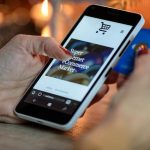Sourced from Lyndax
Marketing is becoming more analytical and more focused on digital marketing through organic search, voice and social media.
This year saw the release of new technologies like Google Home and the iPhone X. Digital advertising expanded gains made last year over television advertising, and markets rewarded brands that bet big on innovation and customer service (think Teslaand Amazon).
As 2018 approaches, there are a number of new marketing trends poised to make a significant impact on go-to-market strategy. Here are 18 of the most important trends to look for in the coming year.
1. AI takes over website messaging.
Thanks to tools like Intercom and Drift, marketers can already use artificial-intelligence-powered live-chat tools to communicate with customers. As this technology gets ironed out, it is likely that more brands will embrace AI live chat to better service website visitors.
2. Personalization goes to the next level.
A key tenet of account-based marketing (ABM) is providing content tailored to specific accounts or account types. As ABM principles go mainstream, look for content personalization to proliferate. Platforms provided by Adobe and Optimizely make it possible for marketers to recommend specific pieces of content similar to the way Netflix suggests shows.
3. Quant marketing goes mainstream.
The rise of quantitative-based marketing is upon us. Organizations like Unilever and Kraft, which previously relied on marketing “soft skills,” are now taking a playbook out of the tech world by building data-science teams to work hand-in-hand with marketers. Next year, quantitative-based marketing will continue to surge as organizations that focus on the data find it easier to grow.
4. Marketers begin developing augmented-reality content.
With the release of the iPhone eight and iPhone X, Apple has made it clear that they are betting on augmented reality (AR). As these new devices go mainstream, brands will begin experimenting with AR-sponsored and -branded content.
5. In-car ads become a new marketing channel for some.
Self-driving cars are on the horizon. The Waymo fleet of self-driving cars has driven three million autonomous miles and simulated over one billion miles. Uber recently ordered 24,000 Volvo SUVs to be outfitted with the latest self-driving tech. The Tesla Models S, X and 3, the Audi A8 and the Mercedes-Benz S-Class are all self-driving to some degree.
What will happen when drivers no longer need to pay attention to the road? They’ll consume content, of course, and with that content will come in-car ads. Watch for some brands to begin experimenting with this new marketing channel in the coming year.
6. Brands start to develop voice-optimized content.
Last year 20 percent of online searches were conducted through voice search. By 2020, that number is expected to increase to 50 percent. Just as marketers have optimized content for web 2.0 and mobile, they will start optimizing content for voice search as well.
For example, because voice search is easier than typing, searches tend to surface more long-tail content. By comparison, text search tends to surface sorter phrases.
7. Privacy protection becomes a major selling point.
There have been a number of high-profile data breaches in 2017. From the DNC email hack to the Equifax breach, cyber security has had a considerable impact on many aspects of our world. Moving forward, consumers will begin to favor products that protect their privacy.
If consumers don’t prioritize privacy, some government associations will, and many are already doing so. For example, a new law passed by the European Union called GDPR will have a major impact on what businesses must do to protect user data. Because of a confluence of factors, marketers will begin using privacy protection and data security as a value proposition across industries.
8. Instagram becomes a more valuable channel than Facebook.
Instagram is growing at an incredible clip. In 2017, Instagram announced that approximately 800 million people use the platform each month. Their latest tool, Instagram Stories, became more popular than Snapchat just one year after going live.
Since brands tend to see better engagement on Instagram than any other social media platform, and because of great advertising controls, Instagram is poised to become the go-to channel for brands interested in social media marketing.
9. Leading brands invest in live events.
Approximately two-thirds of marketers say that they will increase the number of live events they host in 2018. This is because marketers recognize that live events are one of the most effective marketing channels.
There is a reason that some of the world’s most successful organizations, including Salesforce, Airbnb and Google, host an annual event designed to bring existing customers, prospective customers and the press together under one roof.
10. B2B marketers create multichannel cold-outreach campaigns.
The average cold email response rate is low, and it will continue to decline as email clients get better at filtering out junk mail. The best marketers develop integrated marketing campaigns that use a combination of email, digital ads and other channels to engage prospects in new and exciting ways.
For example, by using Twilio marketers can send text messages in addition to email. They can then retarget highly qualified prospects with custom audience ads offered by platforms like Facebook and Google AdWords.
11. Twitter dies a quiet death.
Twitter has been unable to grow users in 2017. The platform has focused on user acquisition rather than on making improvements to their ad platform. As a result, marketers are already using other social media platforms to connect with prospects. This trend will continue in 2018 as Twitter continues to struggle.
12. LinkedIn sees new life among B2B marketers.
While Twitter struggles, LinkedIn has made a number of great improvements to their platform. A site-wide revamp refreshed the LinkedIn user interface in 2017. The platform also saw good improvements to the LinkedIn ad platform. Thanks to these and other changes, B2B marketers will utilize LinkedIn more in the coming year.
13. Machine learning changes how marketers manage ads.
Why pay a digital marketing agency thousands to manage ads when a machine-learning platform can do it better? New platforms like Acquisio and Trapica promise to optimize ad spend through advanced machine-learning algorithms. Marketers simply need to set basic campaign parameters, and the platforms then do the work of identifying ideal audiences and effective creatives.





